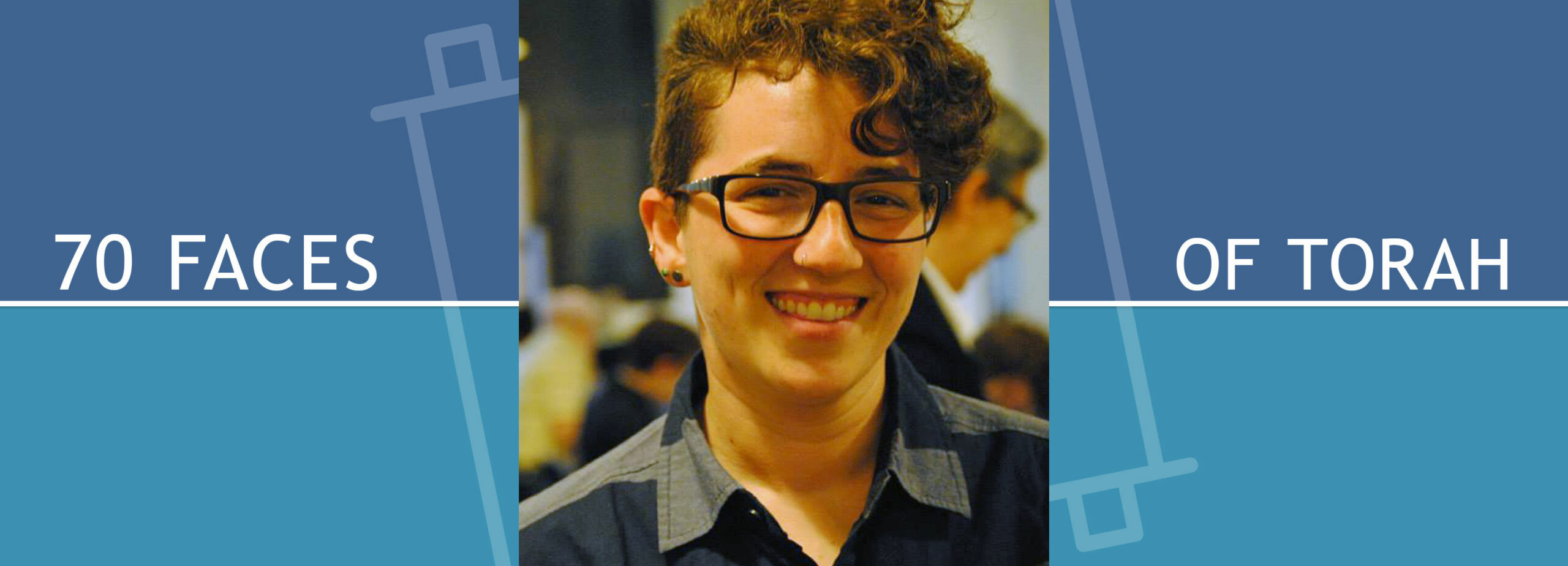Exodus Rules Made to be Broken

Parashat Mishpatim (Exodus 21:1-24:18)
There’s a moment in Fiddler on the Roof where a villager says, “An eye for an eye, a tooth for a tooth.” And Tevya responds, “Very good, that way the whole world will be blind and toothless.”
The villager is quoting from this week’s parashat, Mishpatim, which is almost entirely full of laws. (Tevya might be quoting Ghandi, but we’ll leave that aside for now.) In these chapters, we meet laws like, “you shall not subvert the rights of the needy in their disputes” (ex 22:6); laws about how to treat a slave; laws regarding how to pay monetary remittances to a father for injury caused to a daughter. We also meet laws that fall along the lines of “an eye for an eye” that would elicit a shrewd remark from Tevya. The laws in Mishpatim can feel challenging, upsetting, disempowering, irrelevant, laughable—many just make us feel bad.
Fortunately, when we read Torah and Talmud, the intergenerational rabbinic conversation based on the Torah, we realize that these rules may not be completely written in stone. Rather, our ancestors wrestled with those same written words and felt similarly challenged by their meaning.
We see this beginning in the Mishna, the earliest layer of text in the Talmud, codified around 220 c.e. The Mishna tells us that when we cause bodily harm—say, we poke someone’s eye out—we have a financial responsibility to them: an eye for a complex equation calculating “damages, pain, medical expenses, lost wages, and humiliation” (mBava Kama 8:1). It makes no mention of “an eye for an eye,” or even eyes at all. The Gemara, the next layer of text, which brings in 400 or so more years of rabbinic discussion, opens with a challenge: but doesn’t the Torah tell us “an eye for an eye?!”
What ensues are pages upon pages of debate, trying to reconcile the biblical law and the rabbinic law. When the Torah says, “an eye for an eye,” does it mean a literal “eye for an eye,” or is the Torah’s original intention “an eye for monetary compensation,” as the Talmud suggests.” Is “an eye for an eye” just short-hand?
Throughout the back and forth, the “money” voice offers proof after proof for the latter position. It throws down all of the Talmud’s exegetical tools to assert that the Torah’s original meaning is monetary remittances. These pages are an excellent overview of the tools that the Talmud uses to interpret and reinterpret Torah. And yet, after each proof, the other voice—the “literal” voice—shoots it down, poking holes in the argument and returning to the statement, “perhaps the Torah means a literal eye.” (bBava Kama 83a)
The remarkable thing about this debate, which spans two full pages of the Talmud, is that neither voice thinks we should actually be enacting “an eye for an eye.” No one in the Talmud wants a world where the rabbinic court legislates reciprocal maiming. Rather, both take for granted that we should adjudicate based on the Mishnah. Why, then, the many pages of debate?
The Torah and the Mishna hold in them a fundamental tension: rules are meant to keep us safe, and, at the same time, rules are meant to be broken. Rules help us know how to behave—they help us drive through intersections, trusting that other drivers will stop at red lights; they help us set fair prices; they help us resolve disputes over property with relative ease. And yet, so often, the rules we write down fall short. As we have more opportunities to test out our systems and we hear more stories from those on the losing end of what we thought was justice, our ideas about justice, morality, and equity grow and evolve. As a result, our systems need to be changed. No written legal code is perfectly just, not even the Torah.
The Talmudic back-and-forth about “an eye for an eye” is not about whether we should actually enact that law. Rather, it is presenting different paths for changing that law. One voice advocates for maintaining the appearance of continuity—we change a law slowly, maintaining the power of the original source, and, through discourse, change what the words come to mean. This process is slow, perhaps more universal, and certainly less jarring. The other voice advocates for explicitly uprooting unjust laws and replacing them. This work might be more confrontational, but perhaps it is also more honest—it doesn’t deny the change, but it acknowledges that its risky to start throwing out laws because what if we start to lose the good ones?
By presenting both voices in conversation, we as readers and practitioners get to weigh the two approaches, and use them as we see fit. When the moment calls for reinterpretation, we reinterpret. When it calls for calling out injustice and uprooting, we do that. Either way, the voices offer assurance—our ancestors have our back when it comes to pursuing justice.
Tevya’s sarcastic reaction to the villager’s invoking “an eye for an eye” is a familiar type of witty criticism that is made possible by a 2,000 year tradition of reading our laws with a critical gaze—of a culture open to challenging laws and changing them. Through Jewish humor and the tools of Talmudic debate, a parasha filled with 53 ordinances transforms from 53 opportunities for discomfort into 53 opportunities to lean into the project of wrestling with the legacy of our tradition and creating a more just world.
Frankie Sandmel (they, them, their) is a student at the Rabbinical School of Hebrew College in Newton Centre, MA. This post is in gratitude to Rabbi Benay Lappe, with whom Frankie first studied Bava Kamma 83a, and whose Torah deeply informs how they read these sources.

